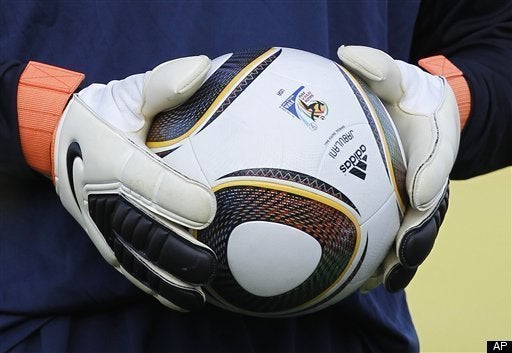
Critics of the official World Cup soccer ball, Adidas' Jabulani, have been vocal and plentiful.
FIFA has already acknowledged that there may be something wrong with the ball, but now even aerodynamic experts at NASA's Ames Investigation Center have come forward with research that inculpates the 440-gram Jabulani, according to the Mirror.
Once the ultra light ball exceeds 44 miles per hour, its flight path can "become unpredictable," writes the Mirror. Goalies and kickers alike have struggled against this so-called "knuckle effect."
NASA experts have also reported that most of the South African World Cup stadiums are located at more than 1,000 meters above sea level, which may further aggravate the ball's tricky trajectory.
Daniel Agger, a Denmark defender, remarked that the Adidas ball made some players look like "drunken sailors."
Goalies from England, Italy, Brazil and Chile have also been vocal about the tournament's official ball, the Jabulani. Huffington Post blogger Ahmed Rehab noted that "very few free kicks have been on target, and more than one goalie has failed to handle easy balls." Rehab also blames the ball for these mishaps: "It does seem that the ball accelerates and bounces faster than normal."
The Telegraph reports that FIFA will address the Jabulani issue at a World Cup debrief meeting in September. (Read more from Switched)